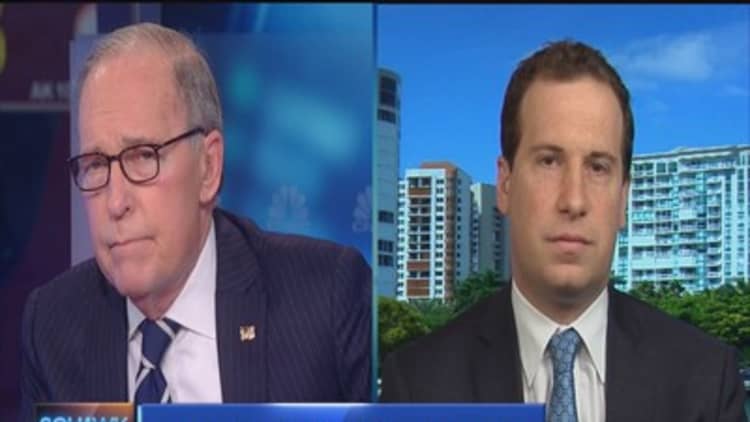


Mortgage rates have been so low for so long that it is hard to believe nearly everybody hasn't refinanced to a lower rate yet. Believe it. More than 5 million borrowers could both qualify and benefit from a mortgage refinance, according to a new report from Black Knight Financial Services.
True, that is less than the nearly 7 million who could have refinanced just last spring, when the average rate on the 30-year fixed mortgage was below 3.7 percent. Today, thanks to the rout in the stock market, rates have fallen back just below 4 percent. About 2.4 million borrowers could potentially save $200 or more on their monthly mortgage payments and an additional 1.9 million could save $100 to $200 per month. Add it up, and that is $1.2 billion still on the table, according to Black Knight.
"If rates go up 50 basis points from where they are now, 2.1 million borrowers will fall out of the running; a 100-basis-point increase would eliminate another million, leaving only 2 million potential refinance candidates, the lowest population of refinance candidates in recent history," said Ben Graboske, senior vice president at Black Knight Data & Analytics.
Read More Lock in now! Stock sell-off sinks mortgage rates
In other words, borrowers should act now, as mortgage rates are expected to rise through 2016. While mortgage rates do not follow the Federal Reserve's moves exactly, they will rise with an improving economy and job growth.
The robust rise in home values has helped bring millions of borrowers back above water on their home loans, allowing them to qualify for a refinance. There is also, however, a government refinance program, called HARP, for those still owing more on their loans than their homes are worth. To qualify, borrowers must have loans backed by Fannie Mae, Freddie Mac or the FHA. There are about 430,000 borrowers who could still benefit from HARP.
Rising home values have also given borrowers more "tappable" home equity — that is, money they could take out in the form of a home equity line of credit (HELOC). While underwriting is far more strict for these loans today than during the last housing boom, when people used their homes like ATMs, they are available at low rates. Their popularity, in fact, is growing again, up 35 percent in 2015 from 2014 levels.
Read More Ready to use your home equity? Read this first
Homeowners today have a collective $4.2 trillion in available home equity, up $600 billion over the last year, according to Black Knight. About 37 million borrowers could pull out an average $112,000 before hitting the amount of equity most banks require them to keep in the home. Average credit scores on new HELOC originations today, though, are at a record high.
Californians are the big winners in home equity. More than a third of the nation's collective home equity is in the state. The state has the most borrowers eligible for a refinance and/or a HELOC. Texas and Florida are next with the most home equity ready to be tapped. Refinancing a primary loan is heavily rate-dependent, but borrowers are still willing to take out a HELOC at higher rates.
"While it's not a hard and fast rule that borrowers won't refinance into a higher rate in order to tap available equity — 23 percent of cash-out refi borrowers over the past six months did just that — for the most part, as rates rise, HELOCs will continue to become more popular to homeowners looking to tap available equity," said Graboske.
Borrowers today appear to be more cautious about their home equity. Those who are taking the money out are using it to pay down debt or to improve their homes, adding value to the investment — as opposed to buying luxury vacations, cars and second homes as they did a decade ago, when home equity was more of an optimistic notion to lenders than an actual reality.


